Oak Street Bootmakers Lakeshore Boot Review | Why Hand-Lasted Matters
I’m writing this review as a bit of an Oak Street novice. I owned a pair of their flagship Trench Boots years ago, but I bought them online without being properly fitted so the sizing was a bit of a shot in the dark. I was never entirely happy with them, so I sold them — but I decided to give the folks in Chicago another shot.
First, I have always loved the look of the Lakeshore boot, especially after Oak Street tweaked the design back in 2020. The slightly dressier silhouette reminded me of Alden’s Straight Tip cap-toe boot and seemed to have a lot of versatility. I felt like you could easily dress these boots up with a suit or dress pants and wear them to the office, or dress them down with denim and beat them up like a service boot.
Second, the fact that the boot is now hand-lasted made me excited. More on that later.
An everyday boot made in the USA, Oak Street is at the peak of American bootmaking and the Lakeshore has a distinguished silhouette that helps it dress up — or down.
Is Oak Street Worth It?
We’ve posted a handy pros and cons list summarizing this review below, so you can get the most important facts up top.
Pros
- Made in USA
- Hand-lasted construction
- High quality leather from Horween
- Versatile outsole
- Great quality control
- Very durable
Cons
- High price
- Storm welt and cap toe might decrease desired dressiness
- Speed hooks’ rivets are exposed, can scuff on the tongue
- Fit might be tricky, company says true to size but reviewer prefers a half size down
Oak Street’s Trench Boot: First Impressions
- Natural Chromexcel®
- Dainite® studded outsole
- 360-degree Goodyear welted
- Similar to their Trench boot but with more formal aesthetic
Right out of the box, I saw a lot to like. I am a sucker for Natural Chromexcel® leather as I feel like it develops a lovely, warm patina that darkens and becomes incredibly personalized with wear and time. Similarly, the Dainite® is a classic, straightforward, studded outsole that has served me well on many other pairs. Flat when viewed from the side, it is dressy enough yet perfectly functional.
Like their Trench, Field, and Chelsea boots, the Lakeshore is Goodyear welted and 100% recraftable. The silhouette of the boot suggests the classic service boot aesthetic of the Trench boot but with more formal elements that strike a really nice balance between rugged and refined.
The Trench boot has a round, wide toe that people who are turned off by it have called “duckbill” like. (Those who love it say the roomy toe is more comfortable and functional than tapered toes; choose your poison.) The Lakeshore is different: the cap-toe has more of an elegant, almond shape. The toe is only partially structured, which I prefer because you will get some nice character as the toe starts to collapse with wear.
Why “Hand-Lasted” Matters
What does it mean for a boot to be “hand-lasted” and why should you care? Why am I excited about the fact that the Lakeshore is now hand-lasted? Good questions that I am more than happy to nerd out about.
First off, a “last” is a device used by cobblers to construct a shoe. It is typically made of wood, plastic, or metal and is roughly shaped like a human foot. Different lasts are meant to mimic different foot characteristics (high or low instep, wider or narrower forefoot, etc.).
Most boots are mass produced by machines which stretch and secure the leather over the last (machine-lasted). A hand-lasted boot, by contrast, is stretched and manipulated by hand, which means that the maker has more control over the construction and can work to ensure the highest quality and attention to detail.
Overall, this change by Oak Street suggests a higher level of craftsmanship and personalization and an effort by the company to create a more refined and unique product.
Natural Chromexcel: Oak Street Bootmakers’ Most Popular Leather
- Flagship leather from Chicago’s Horween Leather Company
- Combination tanned leather: chrome-tanned and then vegetable bark re-tanned
- Used by a ton of makers including Viberg, Rancourt, Allen Edmonds, Thursday, and Grant Stone
Chromexcel® is pretty incredible stuff and is also pretty ubiquitous among higher end boot makers, but that is by no means a bad thing. Horween’s flagship leather has earned its reputation through decades of excellent quality and I am always excited to break in a pair of CXL.
As I opened the box, I appreciated the little card explaining the ins and outs of the leather and how it was made. The complementary Oak Street-branded boot bags are nice as well.
The boots felt substantial without being overly heavy, with the leather exhibiting no major scuffs or nicks on the toe or the heel. There were no obvious signs of poor construction or production mistakes. There were some signs of wheeling from where the stitches had been put in, and I did notice some loose grain on the side of one boot, which I understand is a common issue with CXL. But these are fairly minor imperfections in the long run, and my boots reinforce Oak Street’s reputation for excellent quality control.
See our full guide to Chromexcel leather
Chromexcel Leather Care
- Use microfiber cloth after each wear or a clean, damp rag
- Follow up with a horsehair brush to buff
- Venetian Shoe Cream to condition, apply with a horsehair dauber brush
- Do not over-condition, once every few months is fine
- Use Saddle Soap to remove heavy dirt or mud and then recondition
One of the best things about working with a tried-and-true leather is that care and conditioning are well understood. I use Venetian leather balm on all of my Chromexcel® boots and have never had any issues. I clean them after each wear by wiping them down with a microfiber cloth or a wet (but not soaking) rag and brushing them with a horsehair boot brush.
I think if you aren’t careful, it can be easy to “over-condition” your Chromexcel® boots. Given that this leather is loaded with all kinds of oils, waxes and greases, there is no need to use polish or cream on them all the time.
You should also definitely avoid waterproofing creams. Generally, I just brush mine as needed and 2-3 times a year I condition them. I also personally enjoy a few scuffs and scrapes on my leather as I feel like it adds to the character of the boots and becomes a part of their story.
If, however, you do want to remove those scuffs and brushing doesn’t quite get the job done, you can spot apply the leather balm, rub it in by hand, and then brush and buff. If they get caked with mud and need a deep clean, I will use Saddle Soap to strip off all the grime and then recondition.
Oak Street Bootmakers’ Lakeshore Sole and Construction
- Dainite® studded rubber outsole
- Made in Leicestershire, England
- Original was first introduced in 1894
Dainite’s studded black rubber outsole, like the natty CXL, feels like it is everywhere these days, and again, that is not a bad thing. The soles have been around for over 125 years, and they are still durable and provide solid traction without sacrificing style. They may not be the lightest outsoles and I definitely would not recommend using them to hike up a mountain, but to me they strike a good balance between aesthetics and grip in a way leather soles don’t.
Construction is pretty straightforward with the rubber outsole below a leather midsole and a leather insole, a steel shank, and cork filing in between. They are functional for what I need them for: bumming around town, walking the dog through the park, and not having to worry about what happens if I get caught in the rain. These are everyday city boots, ideal for folks who walk a lot and want stable, supportive footwear. That doesn’t mean they’re for hiking, and that’s fine.
Oak Street Bootmakers’ Lakeshore Sizing & Fit
- Lakeshore last comes in a standard D width
- Maker suggests Lakeshore should be “True-to-Size” for most customers
- I found a half size down from my Brannock was a perfect fit
The fit was one of the biggest surprises. If you look on Oak Street’s website and talk to others familiar with the boots, they are intended to fit true-to-size. However, I took a half size down from my Brannock size and the fit was perfect (I take a standard D-width in a size 11.5 on the device and went with a size 11 in the Lakeshore).
I reached out to the company to get some insight on this and they stated that ,
What we’re seeing here is a shortcoming of the Brannock system.
The problem with measuring only the widest and longest parts of your foot is that other dimensions are not taken into account. Furthermore, they stated that “there is only a quarter of an inch of difference between sizes” and only “slight differences in all the other dimensions too.” The fact that Chromexcel® also has a tendency to give and stretch needs to be taken into account as well. It is entirely possible I might take my Brannock size in another Lakeshore boot made with different leather.
Oak Street was really amazing with their customer service and responded to my inquiry quickly and thoughtfully and proved they really know their product inside and out. To me all of this underscores the importance of establishing relationships with the makers and the shop owners who carry them. Using their expertise, we can manage these difficult sizing questions and find the best fit.
[Further reading: How Boots Should Fit (5 Areas to Look At)]
Oak Street Bootmakers’ Lakeshore Boot Price
- $518
Oak Street has raised their prices slightly within the last few years (as have many other makers). The Trench boot I picked up was $476 in the Summer of 2020. In Spring 2023, the Lakeshore is now up above $500 ($518 for Chromexcel® core styles and more for limited edition designs).
While I still think that this is a reasonable price for an American-made, hand-lasted, recraftable boot made with premium leather and other quality materials, it may be prohibitively expensive for many buyers. After all you can buy an American-made Red Wing for less than half the price of a pair of Oak Street, but this is likely a lower-quality boot with fewer unique features that will wear out faster.
An everyday boot made in the USA, Oak Street is at the peak of American bootmaking and the Lakeshore has a distinguished silhouette that helps it dress up — or down.
Wrapping Up
After a month of wear the boots are holding up very well. Creases have developed below and above the cap-toe and along the back heel. The natural, un-dyed leather has started to darken slightly to a lighter brown and has begun to mold and form to my foot. I have been wearing the boot with denim and beating them up a little bit so they are taking on a more rugged appearance. Still, if I were to give them a fresh condition with something like Saphir® Renovateur, they would take on a nice high gloss and could easily be worn for a more formal occasion.
One minor annoyance involves the speed hooks. The rivet on the back of the hook is exposed on the inside of the boot’s shaft. This means that the metal can rub on the tongue of the boot as it is worn and create some unsightly scuffs. I have a pair of White’s boots that do this same thing. You can only see these scuffs when the boot is not being worn but longer term, I worry about potential damage to the tongue. By comparison, Alden finishes the inside of the shaft with an extra piece of leather lining so that the back of the speed hook is concealed.
Overall, I highly recommend these boots. My previous concerns about Oak Street have lifted away and I cannot wait to pick up another pair of Lakeshores, perhaps in one of their limited-edition leathers. If you are a fan of their Trench boots or other rugged service boot styles I recommend these as a slightly more refined alternative to add a bit more variety to your boot line up.

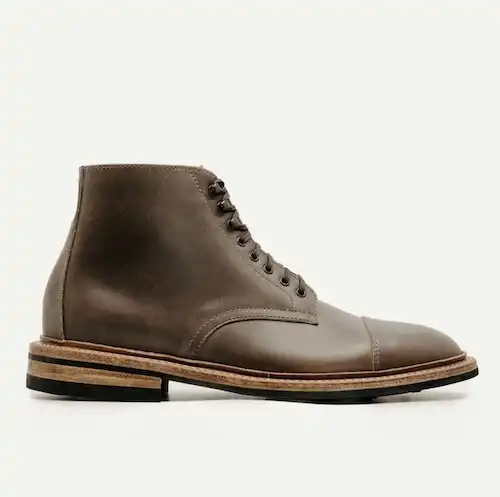

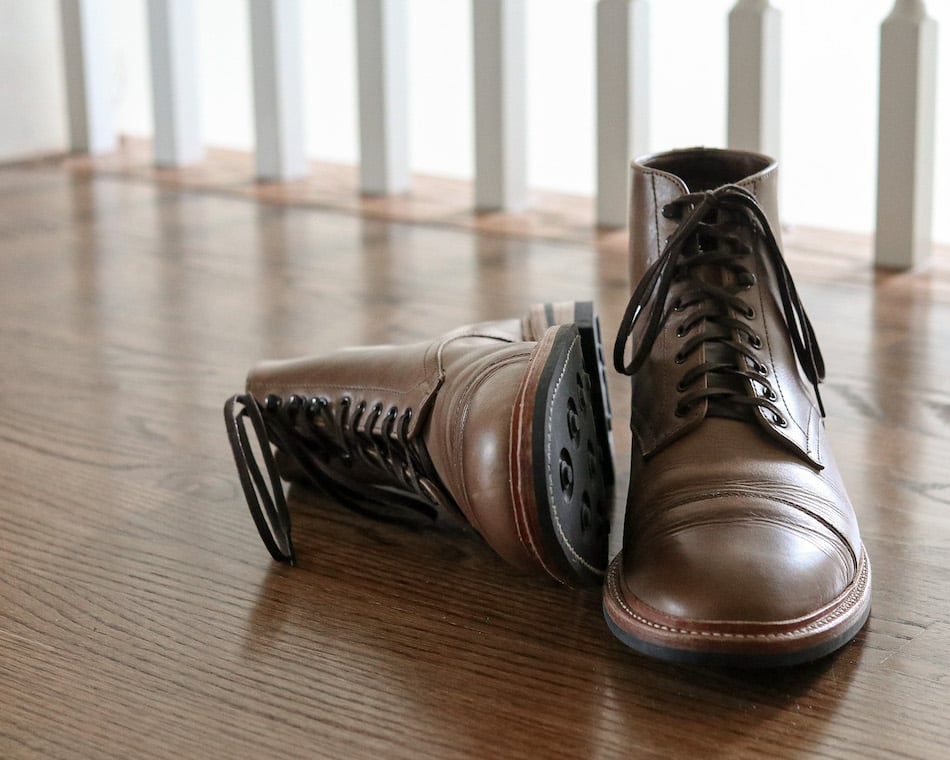


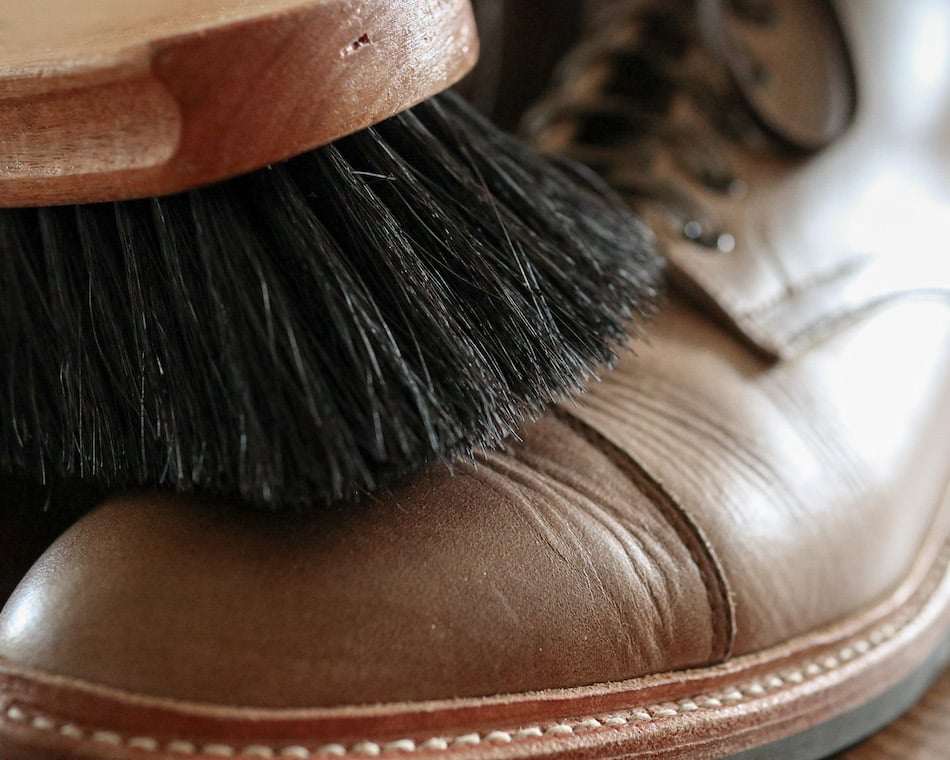
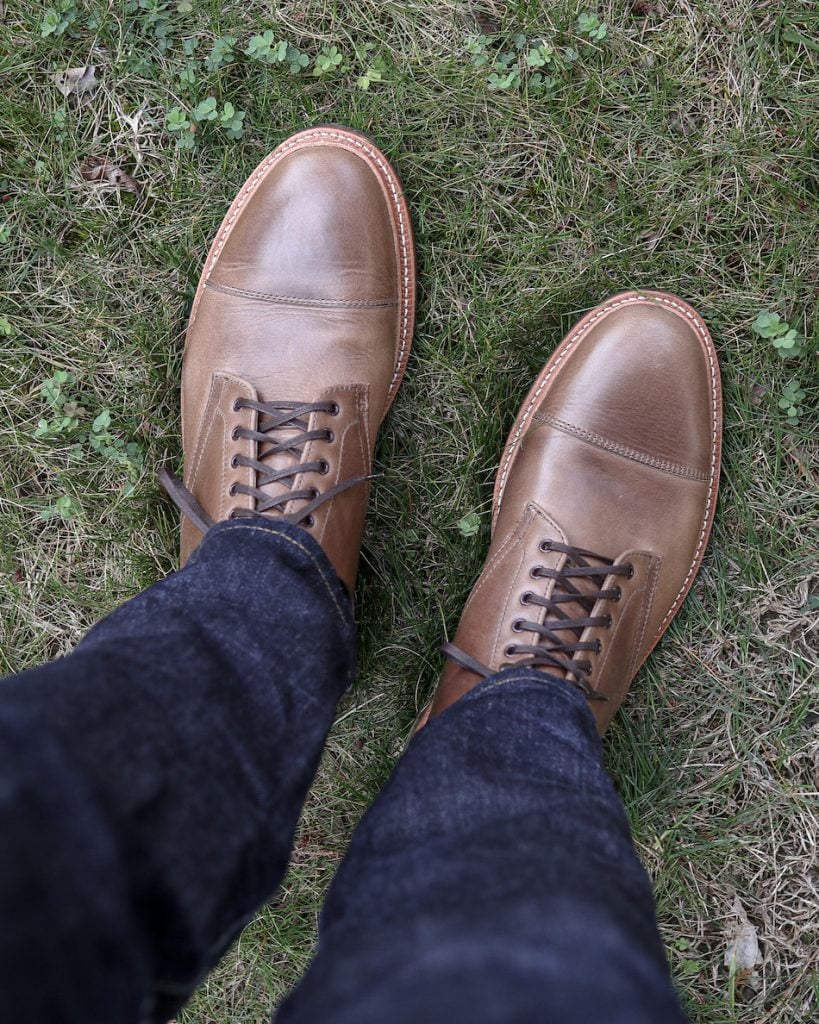

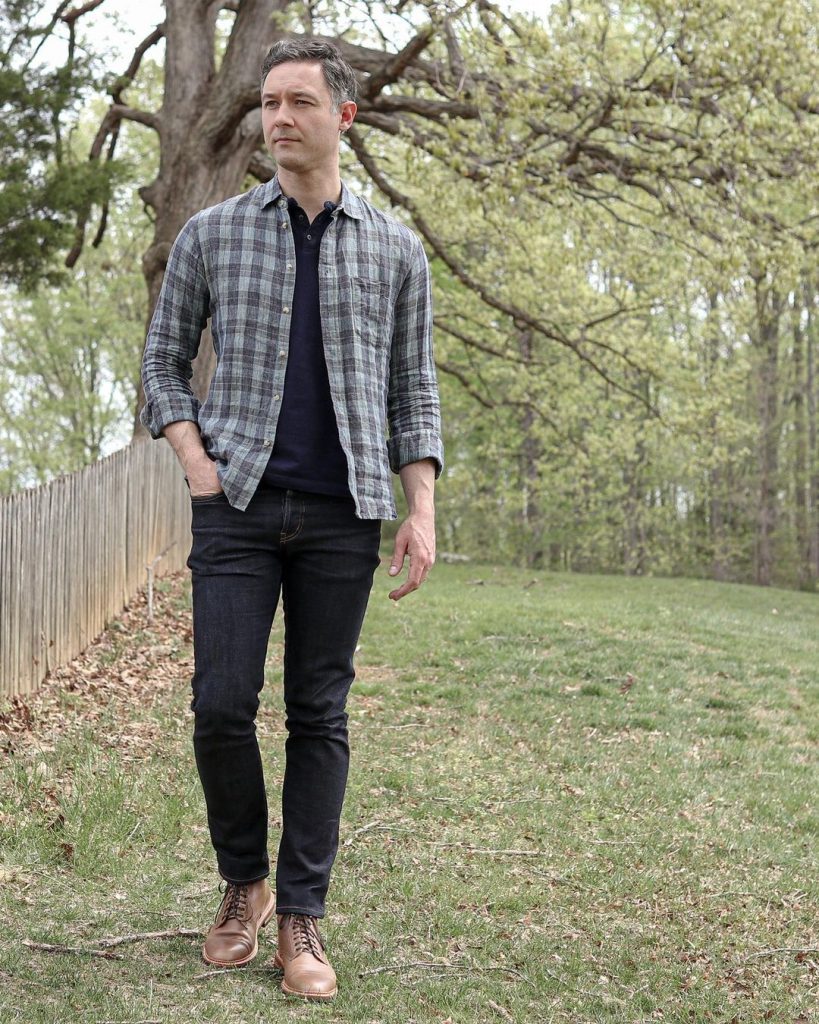

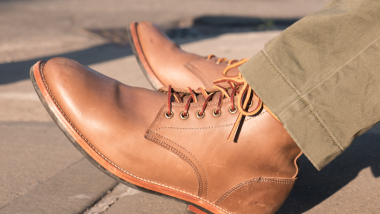
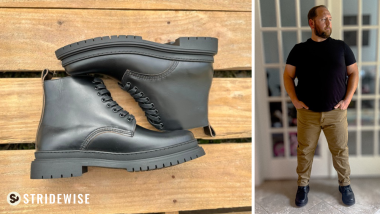
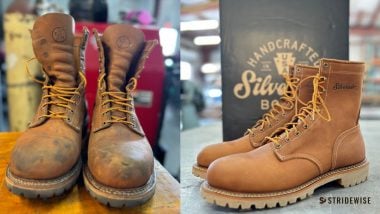


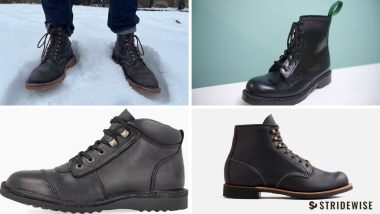

Love me some oak street. We need a review on their Chelseas! I like the more formal look of these. I’ve got a pair of the natural CXL roughout field boots (I believe they are pre-hand lasting) and I adore them. Ive heard some people complaining about having foam filler instead if cork in their oak street boots. Is that really that big of an issue?
No, I don’t think it would be, but Oak Street uses cork. Maybe they added some foam? You’d have to ask them, they’re pretty responsive on Instagram. Those roughout Field boots are fantastic!! Wish I didn’t have a near identical pair from XBXS or I’d snap em up
Love the insight. I also ordered a half size smaller roughout trench boot. The length is perfect but they are a little too narrow at the ball of my foot (toes are fine). Not sure if I should persist and hope they may stretch or return and go true to size.
This is interesting. I’d consider exchanging, but if it’s too late the leather will probably stretch a bit and if it doesn’t get where you need it, a cobbler will probably be able to stretch them a little further
You always do a great job with your product reviews which gives me a lot of help in making my decisions on new products. I have several OSB Lakeshores in the limited editions. All of the OSB that I own have been well made and of great qualify. Their customer service is top notch. I have to say that this boot is my favorite over other brands. I size up due to the volume of my foot. A size 10 works for me on the Trench boot, Truman boot(79 last) and most other boots but this last seems to have less volume. Thanks for the review.
Thanks for the feedback Eric! I love it when people who own the product already read the review and have their feelings supported. Glad you read through!
Hey Mike,
Great review of the Lakeshore boot. Out of curiosity, what made you decide to size down from your Brannock? Did you try 11.5 first and decided to exchange, or did you speak to an OSB rep first?
I’m in the exact dilemma (regarding size) as you. Also an 11.5 but between a C and a D. Checking with OSB first before I pull the trigger but wanted to learn more about your experience.
Hey Luke I actually got an 11 and 11.5 (boot and true size) from Oak Street and I went with true to size, but I wouldn’t have complained if they’d just sent an 11. Both will fit you, it’s really about how roomy you like your toe to be.